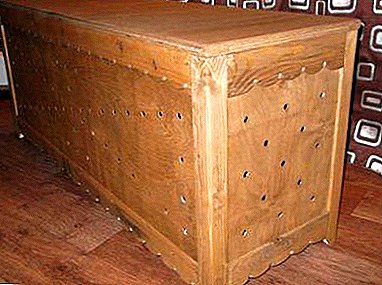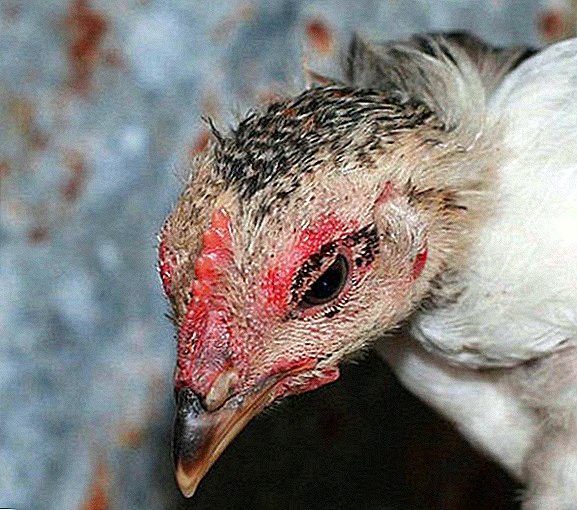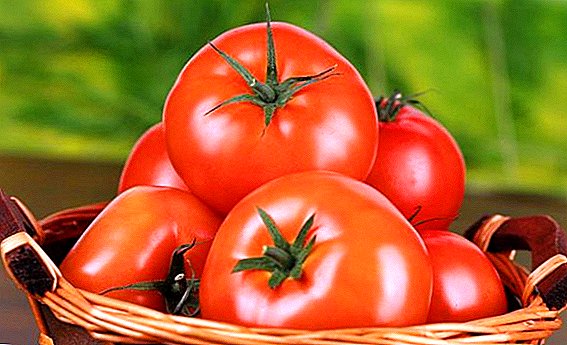
Potatoes are popular in every family, it is present in many dishes. They eat it both on weekdays and on holidays.
The harvest of this vegetable occurs once a year, in the fall. How to keep the potatoes at home until the spring, because at high humidity, it begins to rot, is afraid of frost and high temperatures.
Special containers for storing vegetables will come to the rescue. You can buy it or make it yourself. How good they are for root vegetables, what are the rules for preparing potatoes - we will describe further.
How to store potatoes in the winter in the apartment?
Potatoes are not a perishable product, but storage is rather troublesome. This vegetable is sensitive to moisture, does not tolerate frost and high temperatures, is subjected to rotting.
Due to improper storage temperature, potatoes lose their taste. When the temperature is too low, the potato gets an unpleasant, sweetish taste, and if the temperature is too high, pests appear.
The most optimal temperature for potatoes is + 4-6 degrees, in such conditions all useful substances and vitamins will be preserved. Humidity at the same time should be no more than 80-90%. With a humidity of more than 90%, the potatoes begin to rot, and if the humidity is less than 80%, the mass of tubers decreases. Do not allow direct sunlight on potatoes.
For more information on how to properly store potatoes in the winter in an apartment, you can find out here.
Pros and cons of the container
 There are special containers for storing potatoes at home. You can make such a container yourself. In such a container is maintained microclimate necessary to keep the tubers in good condition. The advantages of storing potatoes in a special container:
There are special containers for storing potatoes at home. You can make such a container yourself. In such a container is maintained microclimate necessary to keep the tubers in good condition. The advantages of storing potatoes in a special container:
- Provides the necessary level of humidity.
- Potato sprouting is minimized.
- In the middle of the liquid is not condensed.
- Protection from direct sunlight.
- Allows you to maintain the desired temperature.
- Reduced loss of elasticity of tubers and dry potatoes.
- Potatoes can be preserved throughout the winter.
- Convenience.
- Aesthetic appearance.
Minuses:
- Potatoes before storage must be prepared: dry, bust.
- Price, or the need to manufacture the container yourself.
Storage rules
- Before you put the potatoes in storage, it is thoroughly dried, remove all the earth and dirt.
- Then the tubers are sorted: all small, damaged, rotten and bad potatoes are seized. Even under ideal conditions, only the highest quality and healthy potatoes are laid for the winter.
Attention! Wash potatoes in any case impossible!
- Before use, the box should be sanitized with a solution of potassium permanganate or bleach. With long storage in the box, the tubers are sorted out from time to time. This should be done when rot was noticed. This suggests that bacteria have entered the storage facility.
Important! In this case, not only infected tubers are removed from the container, but also those that are in contact with them. If the potatoes are visually healthy, but the flies appeared in the room and the smell emanates from the container, then it is necessary to sort out the storehouse completely and remove all the spoiled potatoes from the bottom.
Where better to put the container in the apartment?
Balcony
 It is believed that the loggia is the best place to store tuber vegetables in winter.because in the heat they begin to inevitably wilt and deteriorate. However, you still have to meet certain conditions.
It is believed that the loggia is the best place to store tuber vegetables in winter.because in the heat they begin to inevitably wilt and deteriorate. However, you still have to meet certain conditions.
The most important thing is to ensure a positive temperature, the potatoes should not freeze through. It is almost impossible to keep vegetables on the open balcony in winter, but on a unglazed loggia, potatoes can comfortably spend the winter.
There are containers with heating, you can do this yourself, but with an open balcony, the cost of electricity will be substantial.
More information about how to store potatoes in the winter on the balcony can be found here.
Corridor
Many residents of apartment buildings store potatoes in a common corridor at the entrance. The microclimate of an entrance perfectly is suitable for naughty potatoesAfter all, usually there is just 4-6 degrees of heat necessary for tubers, there are no temperature drops. With this storage, vegetables are always at hand, no special care measures are required, neither heating nor cooling is needed.
Pantry
Storing potatoes in the apartment’s pantry is associated with additional difficulties: too high a temperature and dry air. When storing potatoes in the pantry, the room will have to be constantly aired and moistened.
- in the cellar;
- in the vegetable store.
Can I put potatoes together with other vegetables?
Potatoes can be stored with other vegetables, but not with all. Excellent stored potatoes with beets. Beets are placed on top of 2-3 layers, it absorbs excess moisture.
Recommendation. Other vegetables and fruits stored with potatoes is not recommended because they absorb the potato smell. In addition, many vegetables have different storage requirements than potatoes.
How to make a container with your own hands?
First thing you need calculate the size of the future box, based on the number of potatoes and the place where it will be located afterwards. You can make a container from a variety of materials: plywood, lumber, chipboard, plastic, and even from an old refrigerator or furniture.
Without heating
Materials:
 bar 5 * 5 cm. for the frame;
bar 5 * 5 cm. for the frame;- plywood, fiberboard, OSB or chipboard for plating;
- heat-insulating material: polyfoam, penoplex.
- Assemble the frame of the timber, then sheathe the inside and outside of the sheet material.
- Between the inner and outer layer to lay the insulation.
- Then you need to make a lid of a suitable size, it can be removable, it can be folding.
- As a thermal insulation penoplex is better, because it absorbs excess moisture, but this insulation is more expensive. Sheet material, you can choose any.
From the video you will learn how to make a box for storing potatoes:
Heated
If the loggia is warmed, then additional heating is not required for potatoes, but on a cold loggia a box with heating is needed. For heating use a hairdryer, incandescent lamp or film warm floor. Power should not exceed 60 watts.
When heating lamps in the center of the box have a tin pipe, inside which is placed the heating elements, and for the hair dryer take a plastic tube with holes. The optimum temperature is maintained with a thermal switch, it will automatically turn on and off the heating.
Materials:
- Bar 5 * 5 cm. For the frame.
- Plywood, fiberboard, OSB, or chipboard for plating. Material thickness not less than 5 cm.
- Thermal insulation material: foam, foam.
- Plastic tubes 4-5 cm in diameter.
- Hair dryer
- Relay electrocontact.
- First, collect the frame of the bars, fasten them with corners.
- Then, the resulting structure is sheathed with sheet material with screws and holes are made for plastic tubes with warm air.
- Insulation to the walls of the container is fixed with glue to the entire surface from the inside.
- Holes are made in the air tubes and inserted into the slits made earlier.
- The last thing fasten the hair dryer and isolate all the electrics.
Important! All electrics need to be as secure as possible so that a short circuit does not occur!
Watch the video on how to make a heated box on the balcony for storing potatoes in the winter:
- How long can you store raw in water in the refrigerator?
- Can I store raw, boiled or fried in the fridge?
- Useful tips: how to save the vegetable?
Conclusion
When stored in a special box, potatoes can remain fresh, tasty and healthy for 6-8 months. Anyone with minimal joinery skills and a set of tools can independently make such a container.


 bar 5 * 5 cm. for the frame;
bar 5 * 5 cm. for the frame;









